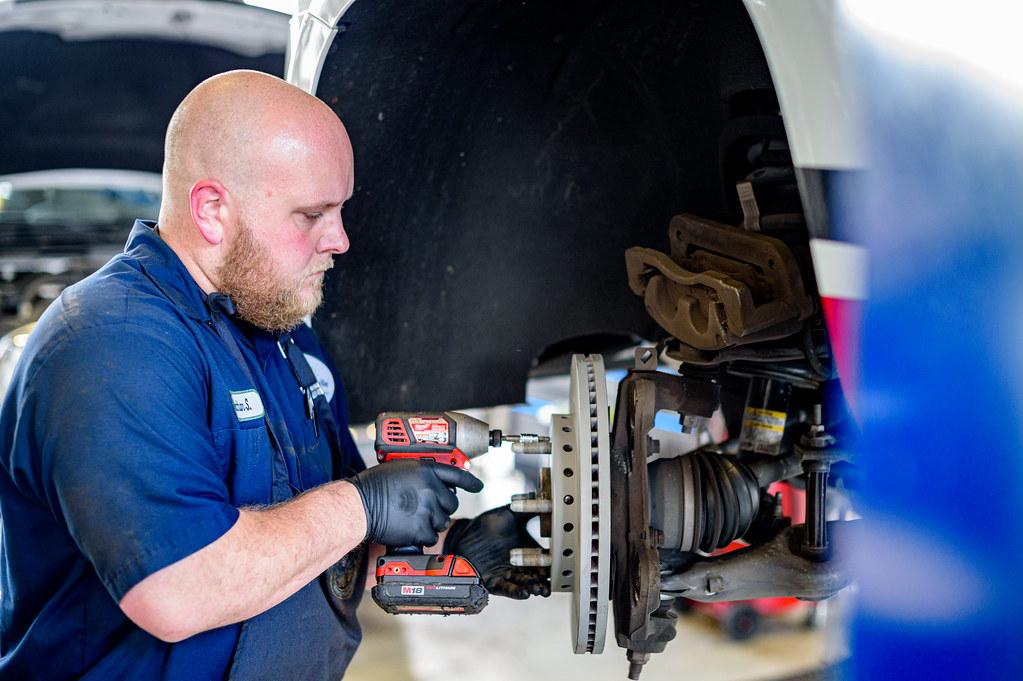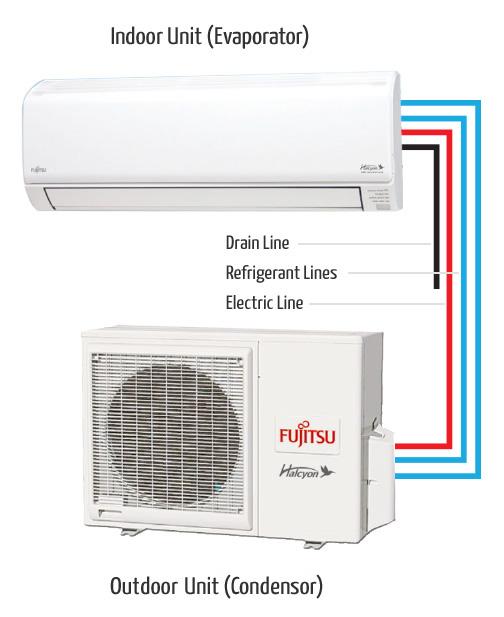As the seasons shift and weather patterns grow increasingly unpredictable, safeguarding our home essentials becomes paramount. Among these, the mini split AC system stands as a steadfast guardian of indoor comfort, but like all guardians, it too requires protection from the forces of nature. Whether you’re bracing for a summer heatwave, an unexpected winter frost, or the unpredictable lashing of a storm, ensuring your mini split AC system is shielded from extreme weather can save you from costly repairs and maintain the sanctuary of your serene indoor climate. Dive into our comprehensive guide as we explore the best ways to fortify your mini split AC system against nature’s wild moods, ensuring its efficiency and longevity for many seasons to come.
Understanding the Vulnerabilities of Mini Split AC Systems
While mini split AC systems are renowned for their efficiency and convenience, they come with their own set of vulnerabilities, especially when faced with extreme weather conditions. One of the notable issues is **electrical surges** during thunderstorms, which can easily damage the system’s delicate electronic components. Additionally, **ice formation** on the outdoor unit during harsh winters can obstruct airflow, causing the system to overwork and eventually fail. Proper maintenance and weather-specific protective measures can significantly reduce these risks.
Another common problem is **debris buildup** during strong winds or heavy rainfall. Leaves, twigs, and other debris can clog the outdoor unit, leading to a drop in performance and potential breakdowns. Moreover, **moisture intrusion** caused by flooding or persistent rain can lead to rust and corrosion of crucial components. To combat these issues, regular inspections and timely cleaning are crucial. Using weatherproof covers during off-seasons and ensuring proper drainage can also help maintain the longevity and efficiency of your system.
| Type of Vulnerability | Impact |
|---|---|
| Electrical Surges | Damage to electronic components |
| Ice Formation | Restricted airflow, overworking the system |
| Debris Buildup | Clogging the outdoor unit, performance drop |
| Moisture Intrusion | Rust and corrosion |
Choosing Quality Covers and Shields for Optimal Protection
Investing in **high-quality covers and shields** is essential for ensuring your mini split AC system can withstand the harshest weather conditions. Look for covers made from durable, waterproof materials like polyester or vinyl that offer UV protection to prevent sun damage. These materials ensure longevity by resisting tears, mold, and mildew. Additionally, choose covers that are designed to fit your specific AC unit snugly, providing a secure, tailored fit that won’t easily be blown away by strong winds. Features like elastic hems, adjustable straps, and air vents can further enhance the protective capabilities of your chosen cover, keeping your system safe and well-ventilated.
For optimal protection, consider using **shields to guard against physical damage** from debris during storms, hail, or high winds. These shields can be made from sturdy materials like aluminum or steel, providing a robust barrier without compromising airflow. Installing an all-weather AC guard or an outdoor unit enclosure can also add an extra layer of protection. Below is a quick comparison of popular materials used in covers and shields:
| Material | Features | Durability |
|---|---|---|
| Polyester | Waterproof, UV-resistant, Lightweight | High |
| Vinyl | Mold-resistant, Easy to clean | Medium-High |
| Aluminum | Rustproof, Strong | Very High |
| Steel | High-strength, Impact-resistant | Very High |

Implementing Strategic Placement to Minimize Weather Impact
One effective way to shield your mini split AC system from unpredictable weather is through **strategic placement**. Positioning the outdoor unit on the **shadier side** of your home can significantly reduce the strain caused by direct sunlight and heat. This not only provides a cooler environment but also maximizes the system’s efficiency. **Elevating the unit** on a sturdy platform can prevent damage from flooding or snow buildup, while ensuring adequate airflow underneath. Moreover, placing it near a **windbreak**, such as a fence or tall shrubbery, can minimize the impact of strong winds and potential debris.
Additionally, integrating **protective structures** can make a substantial difference. Consider adding a **weather-resistant cover** or constructing a small **roof or shed** to shield the unit from heavy rains, hail, or snow. It’s essential to maintain about 2-3 feet of clearance around the unit for optimal performance. Here’s a quick reference guide for ideal placements and protections:
| Protection Strategy | Benefits |
|---|---|
| Shady Side Placement | Reduces Temperature Strain |
| Elevated Platform | Prevents Flood Damage |
| Windbreak Installation | Minimizes Wind Impact |
| Weather-Resistant Cover | Protects from Rain and Snow |

Regular Maintenance and Monitoring Practices for Long-Term Safety
Regular upkeep and vigilant monitoring ensure your mini split AC system withstands extreme weather conditions and remains reliable over time. **Routine cleaning and inspection** are paramount. Dust and debris often obstruct airflow, straining the system. Make it a monthly habit to clean filters and inspect outdoor units for any blockages or damage. Consider **scheduling annual professional maintenance** to check refrigerant levels, inspect electrical connections, and ensure the overall system is functioning optimally.
Beyond cleaning, continuously monitor performance and operation. Early signs of wear or inefficiency should never be ignored. Incorporate a **seasonal checklist** to proactively identify potential issues:
- Inspect insulation on refrigerant lines.
- Ensure the outdoor unit is securely anchored to prevent storm damage.
- Monitor system sounds and vibrations for unusual changes.
- Check drainage for leaks or blockages to avoid water damage.
There’s no substitute for vigilance when it comes to maintaining the longevity and safety of your mini split AC system.
Q&A
Q&A: The Best Ways to Protect Your Mini Split AC System from Extreme Weather
Q1: Why is it crucial to protect my mini split AC system from extreme weather?
A1: Safeguarding your mini split AC system from harsh weather conditions is essential to ensure its longevity, efficiency, and overall performance. Extreme weather, whether it’s torrential rain, blistering heat, or bone-chilling cold, can take a toll on the internal components of your unit, causing malfunctions or extensive damage that leads to costly repairs or replacements.
Q2: What are some simple steps I can take to shield my AC system from heavy rain and flooding?
A2: To protect your mini split AC system from heavy rain and potential flooding, consider elevating the outdoor unit above ground level using a sturdy platform. Ensure the drainage around your home is effective, and install a cover specifically designed for HVAC units to prevent water infiltration while allowing proper ventilation. Regular inspection and clearing of debris from drains and gutters can also prevent water buildup around your system.
Q3: How can I mitigate the effects of extreme heat on my mini split AC?
A3: To combat extreme heat, place your outdoor unit in a shaded spot to reduce direct sun exposure. Sunshades or awnings can be effective in providing additional protection. Always keep the area around the unit clear of obstructions to promote proper airflow, and schedule regular maintenance checks to ensure your system is running efficiently. It’s also wise to insulate any exposed refrigerant lines to prevent loss of cooling efficiency.
Q4: What precautions should I take for my AC system in cold weather?
A4: In cold weather, it’s essential to protect your mini split AC system from freezing temperatures. Ensure the outdoor unit is elevated to avoid snow accumulation and maintain clear access to it. You can also use a specially designed cover to shield the outdoor unit from ice and snow while ensuring proper airflow. Regularly clear any ice buildup and check the defrost function of your system to prevent mechanical damage.
Q5: Are there any universal tips for year-round protection of my mini split AC system?
A5: Absolutely! Regardless of the season, keeping a close eye on your mini split AC system is key. Regular maintenance, such as cleaning or replacing filters, checking refrigerant levels, and inspecting for any wear and tear, is crucial. Using surge protectors can defend against electrical storms and power surges, while ensuring your unit is installed by a professional can prevent alignment and operational issues. Consistent attention and care year-round can significantly extend the life of your AC system.
Q6: Can you recommend any specific products or accessories to enhance the protection of my mini split AC system?
A6: Certainly! Investing in a durable, weather-proof cover designed specifically for your mini split model can offer excellent protection against the elements. Additionally, surge protectors tailored for HVAC systems can safeguard against electrical spikes. For added peace of mind, consider security cages or enclosures that not only protect from weather but also deter theft or vandalism. Professional installation services also often offer additional accessories or upgrades tailored to your local weather conditions.
Q7: How often should I schedule professional maintenance to ensure my mini split AC system is weather-ready?
A7: Regular professional maintenance is recommended at least twice a year, ideally before the onset of high-demand seasons such as summer and winter. These check-ups can identify and address potential issues before they escalate, ensuring your system is optimally prepared to face extreme weather conditions. Routine maintenance includes inspecting and cleaning components, checking refrigerant levels, and ensuring all parts are operating efficiently.
By adhering to these protective measures and maintenance tips, you can keep your mini split AC system in top shape, regardless of what Mother Nature throws your way.
To Conclude
As the curtain falls on our exploration of safeguarding your mini split AC system from the whims of extreme weather, remember: a stitch in time saves nine. By embracing these proactive measures, you transform potential hazards into moments of tranquility, ensuring your cooling sanctuary remains steadfast come hail or high water. As the seasons dance their age-old waltz, arm yourself with knowledge, fortitude, and a touch of care. After all, in the grand theatre of home comfort, your mini split AC is a star worth protecting. Here’s to a resilient, refreshing future.

